Introduction to the basic knowledge and steps of blending coffee beans, the difference between Italian coffee beans and soe coffee beans

For professional baristas, please follow the coffee workshop (Wechat official account cafe_style)
Many kids don't know how to mix beans. Now Qianjie Coffee will show you how to mix beans and how to mix coffee.
The reason and purpose of matching
People need to put coffee from different places together for several different purposes. The ideal goal, of course, is to piece together a coffee that tastes better than any of them. But generally speaking, Arabica coffee from a single origin is enough to make coffee that tastes good for export; it has a delicate flavor, a soft taste and a sweet aftertaste. So there is no need for "blending" (that is, putting together coffee from different places).
The main commercial purpose of blending coffee beans is to reduce costs and mix coffee with coffee that is not very good. In order to improve sales profits. There is also a possible purpose, that is to put together a unique taste, the unique taste of a brand. Customers who like this taste have to go to this factory to buy it, but can't get it from other suppliers. Another advantage of this is that the taste of this blended coffee will not change no matter how the taste of the coffee from different years varies from place to place.

Here we ignore other possible commercial purposes and concentrate on understanding the blending for the purpose of improving the taste and quality of coffee.
Before blending any coffee, Qianjie believes that it is necessary to first understand the taste characteristics of all kinds of coffee, and at least make it clear in mind that the kind of coffee you want to mix can not be achieved by any single coffee. It would be a pity if the blended coffee doesn't taste better than one or more of them. It would be better not to match. If you use some pretty good quality coffee for blending, the result is likely to be so.
Although some fixed varieties of coffee can be drunk directly as individual coffee, most of the coffee has more or less defects in flavor, such as no special flavor, lack of depth, not strong enough or a certain flavor is too strong. In order to make up for these deficiencies, it is necessary to combine several kinds of coffee beans with different characteristics to create a harmonious and deep flavor. Some people think that the fun of coffee is focused on baking and blending, while drinking coffee is just enjoying the fruits of your own victory. Blending coffee is not a random mix of coffee beans.
Sometimes the blending of two kinds of boutique coffee will suppress each other's unique flavor, so blending is not simply blending several kinds of boutique coffee together. Matching is just like a painter adjusting and creating charming colors in a palette, so the mixer can also blend with coffee beans to produce an attractive flavor. Therefore, it is not too much to say that matching is an art. as an artist, the assembler needs not only experience and inspiration, but also through certain scientific calculation. The emergence of works of art will not be accidental, but the outbreak of long-term accumulation. The average blended coffee does not need to use more than five kinds of coffee beans. Because if there are too many kinds of coffee beans, the situation can be very complicated. Almost only a very special expert would not be confused by so many different coffee beans.
Qianjie Coffee focuses on freshly roasted coffee, and different types of blended coffee will be launched to meet the needs of different customers. for example, Qianjie will recommend basic blending for customers who pursue performance-to-price ratio. this is an all-Arabica Italian coffee bean made from Brazil and Yunnan, with price advantage and outstanding flavor. On the other hand, Qianjie will also launch sunflower sunflower matching for customers who pursue flavor, which is a boutique mix of Yega Sherfield sun red cherry and Honduran Shirley. Coffee with the ultimate wine heart chocolate flavor is very popular with guests.
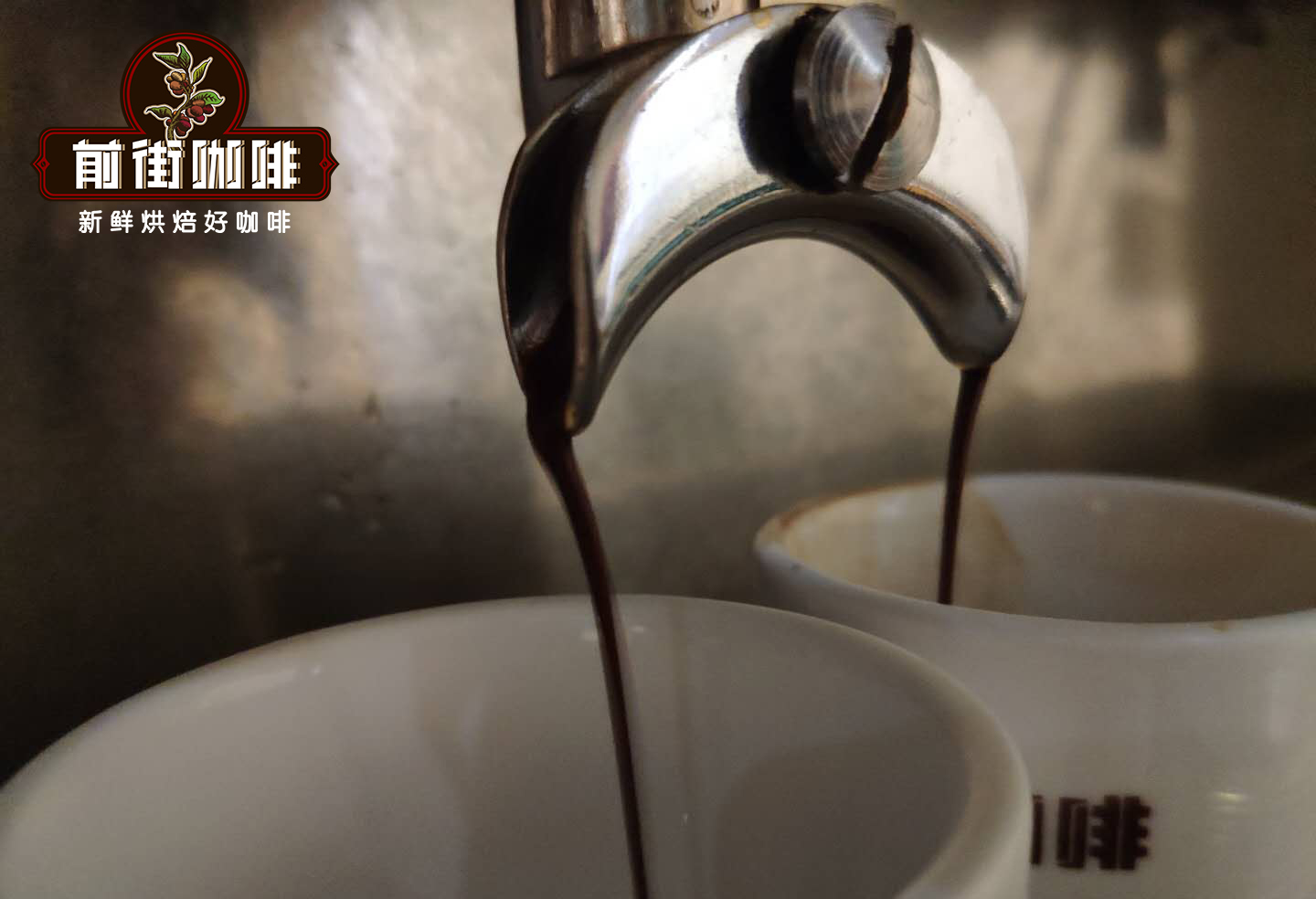
The relationship between matching and baking
Do you want to bake and then mix, or do you want to mix and bake first? Which way is better?
Qianjie Coffee believes that if you have a definite recipe, of course the easiest way is to put different coffee beans together and then bake them together. But if you are trying and comparing different ingredients and proportions, you certainly want to bake all kinds of coffee beans before trying. Otherwise, every time you change the composition and proportion of the mix, you need to bake it again.
In the field of baking, first matching and then baking is generally called "raw spelling", and baking before blending is called "cooked spelling". In fact, there is no advantage or disadvantage of these two methods. For example, the advantage of baking together with the same batch of beans is that the baking degree of the whole batch of beans tends to be consistent and the flavor is stable, but the number of beans that are suitable for baking should be chosen to mix. It is more likely to bake uneven. Cooked spelling can grasp the best roasting properties of each coffee bean, and then mixing can learn from each other's strong points to offset their weaknesses.
Some coffee is denser or changes in volume before and after roasting, and these beans are roasted differently from "washed" Arabica coffee. Arabica Coffee processed by the "drying method" is baked at a higher temperature. But in most cases, all kinds of coffee beans can be roasted together.
In general, all coffee beans can be roasted together. You need to consider using independent baking only when the baking effect is not ideal. At this time, independent baking can usually achieve better results. Especially for drum roaster, a relatively moderate baking degree can be found in general.
But some individual coffee beans are not easy to bake evenly. For example, Yemeni coffee, Ethiopian DP coffee beans, and so on. The uneven baking color is not a defect, only the "washed" Arabica coffee needs to be roasted evenly.
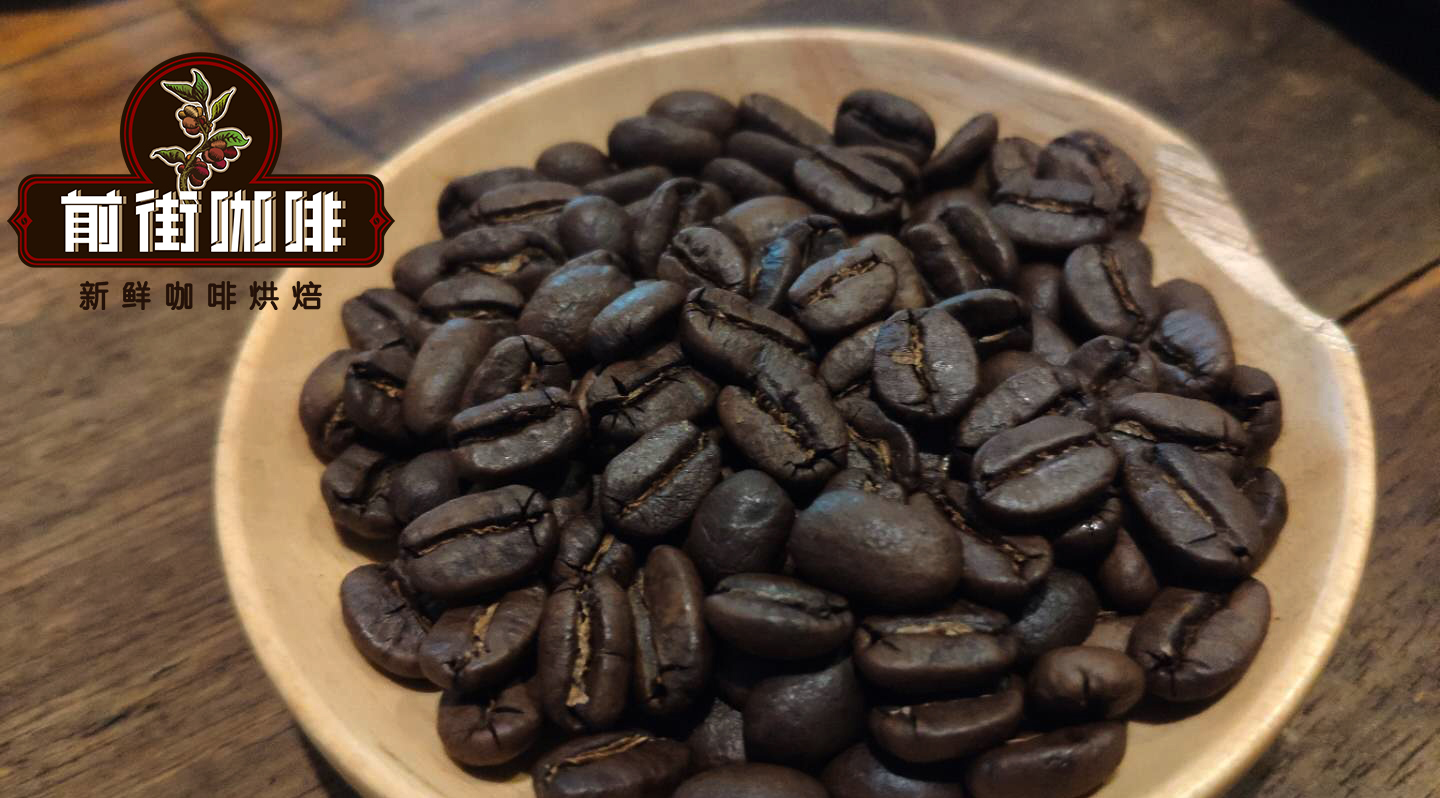
General steps and principles of matching
Before we mix the coffee beans, we should know the following points:
1. The theme of the match wants to match what kind of flavor, that is, to determine the goal of the match.
two。 To understand the characteristics of coffee beans, in order to mix coffee, you must first be familiar with the characteristics of each kind of coffee, and understand the subtle relationship between roasting degree and coffee flavor, all of which can only be achieved by tasting the cup.
3. Determine the task of participating in the blending of coffee beans
Since a variety of coffee beans are used together, it is necessary to know whether the task of each kind of coffee beans is to make her show soft bitterness, distinct acidity or thick mellow taste, etc.
Generally speaking, the following principles should be followed when matching:
1, the blending of raw beans requires the use of coffee beans with their own characteristics, and avoid using coffee beans with similar flavor. The choice of raw beans can be considered from three aspects:
Raw bean treatment method: that is, whether raw beans are treated by washing method or drying method, which has a lot to do with the flavor of coffee beans.
Producing areas of raw beans: coffee producing areas are generally divided into three major regions, including about 20 countries in Central and South America, namely, Brazil, Colombia, Guatemala, Mexico, Delvado, Jamaica and Peru, and about 10 countries in Southeast Asia, namely India, Indonesia (including Java and Sumatra) and Papua New Guinea. About 25 countries in the Arab and African regions, namely, Ethiopia, Kenya, Tanzania, Arabia, Uganda and so on.
Coffee bean flavor: refers to the coffee bean flavor of sour, bitter, sweet, alcohol which is more prominent, or all aspects of more balanced neutral beans.
Now the most commonly used raw beans are Brazil, Colombia and Mocha.

2, the number and proportion of coffee beans participating in the blending
Since it is a blending, it naturally refers to the blending of more than two kinds of raw beans, but a special example is that it can also match the same kind of coffee beans with different roasting degrees, or even the new crop and aged coffee or old crop of the same kind of coffee beans, so the type referred to in the blending is no longer a coffee variety in a narrow sense, but extends to the flavor of coffee in a broad sense. 6 kinds of coffee beans are generally used when blending, too many kinds of coffee will not be able to show the unique flavor of coffee. Blended coffee usually does not take the 1:1 blending ratio, because this may suppress each other's unique flavor, so the blending must be primary and secondary in order to produce a better taste than a single coffee. If you want the coffee to taste complex and changeable, you can reduce the proportion of raw beans, and vice versa.
3. The blending of coffee depends on constant attempt
Therefore, a matching schedule should be drawn up mathematically before matching, and then the best plan should be determined through the process of matching-tasting cup.
Don't think that this is a negative and stupid approach. In fact, a good cup of coffee can only be made by the experience, inspiration and tireless attempt of the blender. Qianjie Coffee launches 4 kinds of coffee beans with their own characteristics according to different requirements:

[sunflower warm Italian coffee beans] Shirley of Honduras: Yega sun-red cherries, ratio 6:4, cooked
Flavor characteristics: it has obvious acidity, a hint of berry aromas, rich aromas of wine and chocolate, and a comfortable finish.
Shirley coffee beans give this coffee a strong whisky aroma and a heart chocolate finish. Sun red cherries bring a sense of fermentation to this coffee, with berry aromas and a smooth palate. This half-pound blend of warm sun coffee beans is suitable for coffee shops that require special espresso flavor and high quality beans, or for concentrated lovers who do not use much.

[Qianjie coffee boutique] Goran: Brazil, ratio 3:7, cooked
Flavor features: comfortable sweet and bitter taste, the entrance is very smooth, with a hint of grass, the fragrance is slightly bitter, smooth and smooth, the aftertaste can be pleasant.
The coffee beans in the Colombian Huilan area have a pleasant sour taste, mellow smell, moderate acidity, rich sweetness and intriguing sweetness, while the coffee beans in the Brazilian Hillado region have a comfortable bitter taste and a very smooth entrance. This boutique blended coffee is suitable for all kinds of boutique coffee shops.
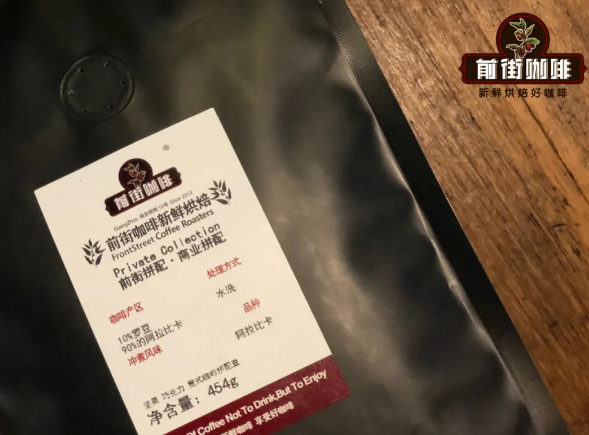
[front Street Coffee Commercial mix] Colombia: Brazil: Robsta, ratio 3:6:1
Flavor characteristics: classic taste, caramel sweetness, nutty and cocoa, dark chocolate flavor, sweet and sour balance, a little bittersweet, lingering finish.
The coffee beans in the Colombian Huilan area have a pleasant sour taste, mellow smell, moderate acidity, rich sweetness and intriguing sweetness, while the coffee beans in the Brazilian Hillado region have a comfortable bitter taste and a very smooth entrance. Robusta is rich in oil. This commercial blended coffee is suitable for coffee shops and beverage shops of all sizes.
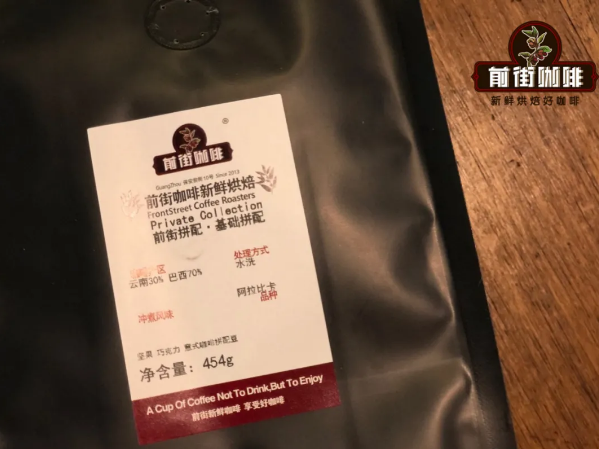
[Qianjie Coffee basic mix] Yunnan AA: Brazil, ratio 3:7, cooked
Flavor characteristics: with soft fruit acid, caramel sweetness, nutty, dark chocolate flavor, smooth and sticky, but light taste.
The natural conditions of Yunnan are very similar to those of Colombia, with high altitude, great temperature difference between day and night, mellow flavor, moderate sour taste, strong and mellow taste, uniform particles, more oil, and fruity flavor, and its quality and taste are similar to Colombian coffee. The coffee beans in the Hilado region of Brazil have a comfortable sweet and bitter taste, and the entrance is extremely smooth. This basic blend of coffee beans is suitable for small coffee shops or bakeries and beverage shops.
For more boutique coffee beans, please add private Qianjie coffee on Wechat. WeChat account: kaixinguoguo0925
Important Notice :
前街咖啡 FrontStreet Coffee has moved to new addredd:
FrontStreet Coffee Address: 315,Donghua East Road,GuangZhou
Tel:020 38364473
- Prev
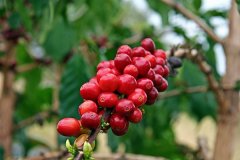
Where did the coffee beans of 90+ raw bean processing company come from?
For the exchange of professional baristas, please follow the coffee workshop (Wechat official account cafe_style). The coffee producing area in Indonesia is mainly limited to Java, Sumatra and Sulawesi. The original species of Robusta accounts for 90% of its coffee production. A small amount of Arabica native coffee beans produced on the island of Java are sour coffee beans with small particles. The original Arabicam on this island
- Next
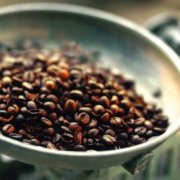
How do Starbucks spell coffee beans? Why mix coffee beans?
Communication of professional baristas Please pay attention to Coffee blending in Coffee Workshop (Wechat official account cafe_style) although some fixed varieties of coffee can be drunk directly as individual coffee, but most of the coffee has more or less defects in flavor. For example, there is no special flavor, lack of depth, not strong enough, or a certain taste is too strong. To make up for this.
Related
- Guji coffee producing area of Guji, Ethiopia: Humbela, Shakiso, Wulaga
- What is the most expensive variety of Qiloso in BOP multi-variety group?
- How to store the coffee beans bought home?
- Why are Yemeni coffee beans so rare now?
- Ethiopian Sidamo all Red Fruit Sun Sun Santa Vini Coffee beans
- SOE is mostly sour? What does it mean? Is it a single bean? what's the difference between it and Italian blending?
- Is Italian coffee beans suitable for making hand-brewed coffee?
- How to choose coffee beans when making cold coffee? What kind of coffee beans are suitable for making cold coffee?
- Just entered the pit to make coffee, what kind of coffee beans should be chosen?
- Can only Japan buy real Blue Mountain Coffee? What are authentic Jamaican Blue Mountain coffee beans?

